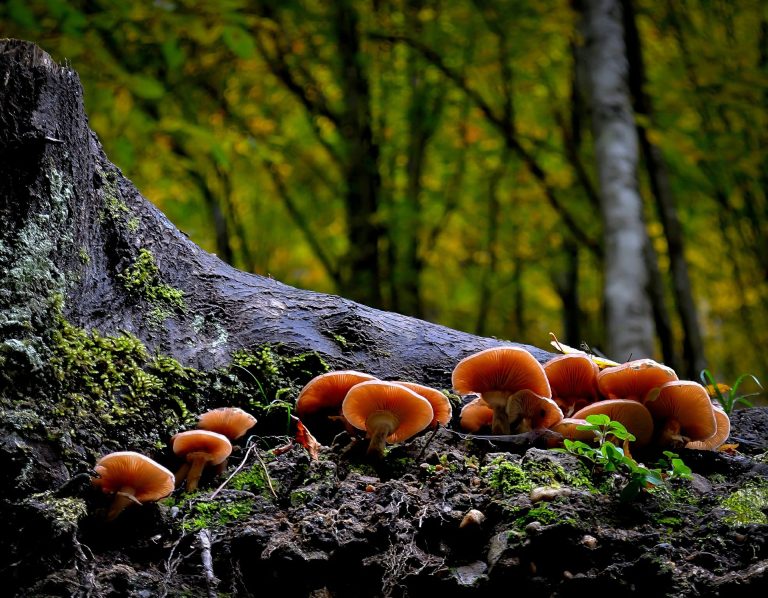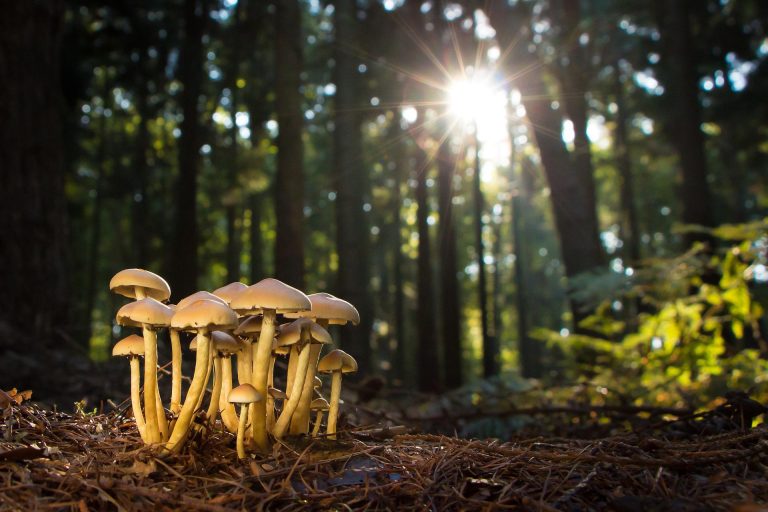The Woodwide Web
WHAT REALLY HAPPENS UNDER THE TREE?
The roots of the trees grow down through the soil and anchor the tree in position. But they do far more than this. They are vital to the life of the tree. All the water that the tree needs is taken in by the roots from the soil and travels upwards through the trunk to the leaves where it is used by the leaves during photosynthesis.
But there is far more than that going on in the soil down below the tree. Something else lives there too which is vital for the health of the tree, and this is the fungi. We are familiar with fungi as the mushrooms we see poking up above the soil, particularly in autumn but these are only the fruiting bodies of the fungi – the part needed for reproduction. These mushrooms carry spores in the gills underneath the cap and when these blow in the wind, the fungi can become established in other places.
Under the tree however, in the soil are the main parts of these fungi. These are very long, thin, white threads called mycelium. They look like the strands of a spider’s web, growing all through the soil and they are everywhere. They are living things and they get their food from the dead leaves that fall on to the soil, as well as from dead wood in the soil. Only for them, nothing would rot away and break down, so they are a vital part of the ecosystem.

Recently however, scientists studying mycelium have made new and remarkably interesting discoveries. They noticed that some strands of this mycelium grow really near to the very finest of the tree’s roots which are called root hairs. The mycelium is able to use extra plant sugars made by the tree and excreted through these root hairs to help it grow. In return the tree’s root hairs are able to absorb nutrients produced by the mycelium along with the water they take in from the soil. These nutrients such as nitrogen and phosphorus help the tree to grow. Each one benefits from the other. This sort of arrangement is called symbiosis.
But lately, the scientists have discovered even more about this. It is not just a straightforward trade between the tree’s hairs and the mycelium. It is more than this. The tree root hairs can actually use the mycelium as a transport system to send resources and nutrients to other trees nearby. A dying tree can send all the resources it gathered while it was alive to benefit other trees nearby. In particular, young seedlings in a heavily shaded understory might be supported with extra resources by its stronger neighbours. Even more remarkably, the network also allows trees to send one another warnings. A plant under attack from aphids can indicate to a nearby tree that it should raise its defensive response before the aphids reach it.
In other words, trees have a social network underground. They can communicate with each other, and they use the mycelium of fungi to do it. Truly a Wood Wide Web!









